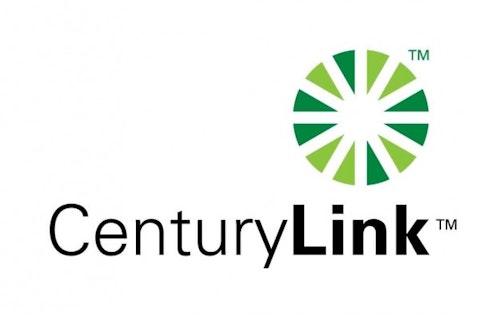I’ve written before about CenturyLink, Inc. (NYSE:CTL) and how it appears to be the best positioned local telecom. Not a lot has changed about the company, but the market didn’t like the company’s new, Capital Allocation Strategy. Most of the headlines have focused on the dividend being cut from $0.725 per quarter to $0.54. However, there is a bigger change happening here, and though in the short term this doesn’t feel like a better deal for investors, it just may be.

Telecommunications companies like CenturyLink and their local telecom brethren like Frontier Communications Corp (NASDAQ:FTR) and Windstream Corporation (NASDAQ:WIN) face a similar challenge. Each of these companies owns thousands of local access lines, and customers are realizing they don’t need a landline in their home.
The larger players in the field like Verizon Communications Inc. (NYSE:VZ) and AT&T Inc. (NYSE:T) also face the same challenge. The key difference between Verizon and AT&T versus their competition is the two larger companies have significant wireless businesses that are growing.
CenturyLink and the local companies are trying to offset landline losses with growth in broadband and video offerings. They also have come to realize that data centers that offer cloud solutions are a key growth opportunity. Most of the local telecom companies have made significant acquisitions in the last few years, and this has brought on a new challenge — maintaining the safety of their dividends.
4 of the 5 Now Have Safe Dividends
CenturyLink said its new capital allocation strategy allows the company to maintain a payout ratio of 60% or less after their capital loss carryforward is extinguished. In addition, the company wants to use some of its free cash flow to pay down debt and maintain a certain level of leverage. In the long run, these are positive moves.
If you look at each of the companies in the telecom industry, they have significantly different free cash flow payout ratios. The two safest dividends in the industry are clearly AT&T and Verizon’s. These two companies have payout ratios of 38.6% at A&T and 23.21% at Verizon, so a dividend cut is the furthest thing from anyone’s mind.
However, when you switch over to the local telecoms. the picture is very different. Frontier has a payout of 50.78% today, but keep in mind the company already cut its dividend to achieve this level. CenturyLink joins Frontier in the dividend cut club, but even before this cut, the company’s free cash flow payout ratio for the year was 57.57%.
The dividend that looks the most at risk is the holdout of the group Windstream. The company’s free cash flow payout is 147.74% and the stock is down today, likely in response to the worry that this will be the next dividend to fall.
A Balancing Act
The one big difference between CenturyLink’s dividend cut and Frontier’s prior cut is that CenturyLink also added a significant share repurchase program. I’ve barely seen this mentioned, but the company instituted a $2 billion share repurchase program, and said they expect to complete these purchases by the beginning of 2015.
CenturyLink’s shares are off over 22% right now, which indicates the market isn’t putting much faith in the share repurchase plan. However, assuming CenturyLink divides these repurchases evenly between the next two years, shareholders will actually see more money returned to them.
Prior to this change, CenturyLink was spending about $1.8 billion a year in dividends. Under the new strategy, the company would pay about $1.35 billion in dividends, and repurchase about $1 billion in shares. Between the new dividend amount and share repurchases, this represents a 29.72% increase in the cash being returned to investors over the next two years.
The challenge of course is that CenturyLink has to follow through with these share repurchases. At this point, investors have to take the company’s word. If it delivers, CenturyLink would retire nearly 9% of their diluted share count over the next two years. This is significant and shouldn’t be overlooked.
In the end, CenturyLink is trying to pay a competitive dividend, repurchase shares, and maintain a strong balance sheet. If you look at the company’s debt-to-equity ratio of 1, the company actually has one of the strongest balance sheet’s in the industry. Only AT&T has a better debt-to-equity ratio at 0.60. The remaining companies have ratios of 1.23 at Verizon, 1.93 at Frontier, and 6.31 at Windstream.
The Bottom Line
Investors don’t seem to like the news, but in the long run it’s the right thing to do. CenturyLink should retire a significant amount of shares in the next two years, while still paying a competitive dividend. After today’s drop, the new yield is almost 6.7%. While this falls behind Frontier at 8.89%, Frontier isn’t buying back $2 billion in shares. Windstream’s over 10% yield is likely the next to fall, due to the company’s high free cash flow payout and highly leveraged balance sheet.
If investors want to buy shares in a company and not worry about the dividend, either AT&T or Verizon would fit the bill. While A&T’s yield of 5.1% and Verizon’s yield of 4.6% don’t get the same attention as the local telecoms., investors can rest easy that their yields will grow over time.
The bottom line is that CenturyLink’s plan is unpopular right now, but the share repurchases should put a floor under the stock, and improve earnings per share. For investors like myself that bought prior to the cut, we are still sitting on a pretty nice yield. This new strategy isn’t the terrible news that everyone seems to think it is.
The article The News Isn’t Really That Bad originally appeared on Fool.com and is written by Chad Henage.
Copyright © 1995 – 2013 The Motley Fool, LLC. All rights reserved. The Motley Fool has a disclosure policy.





